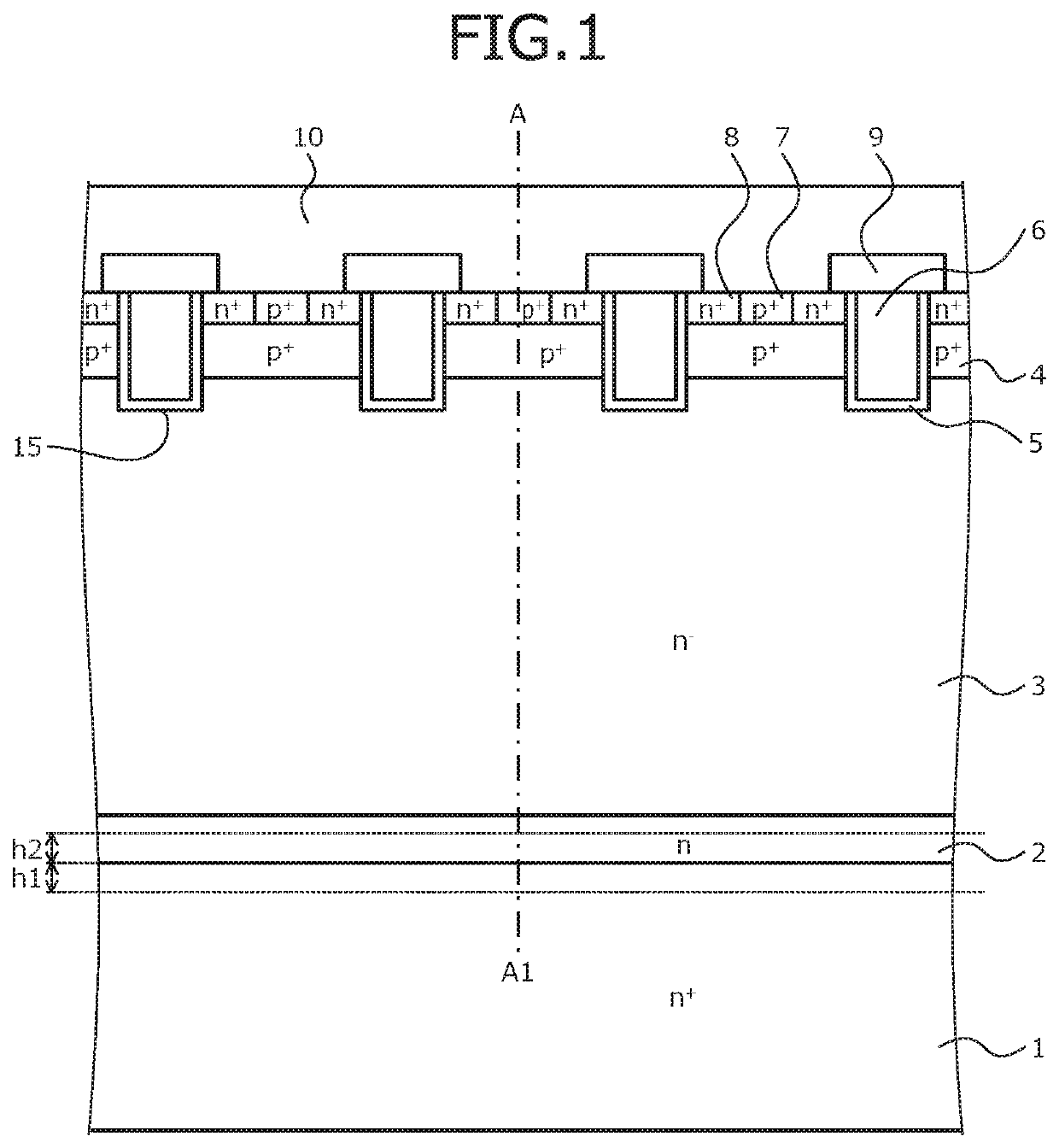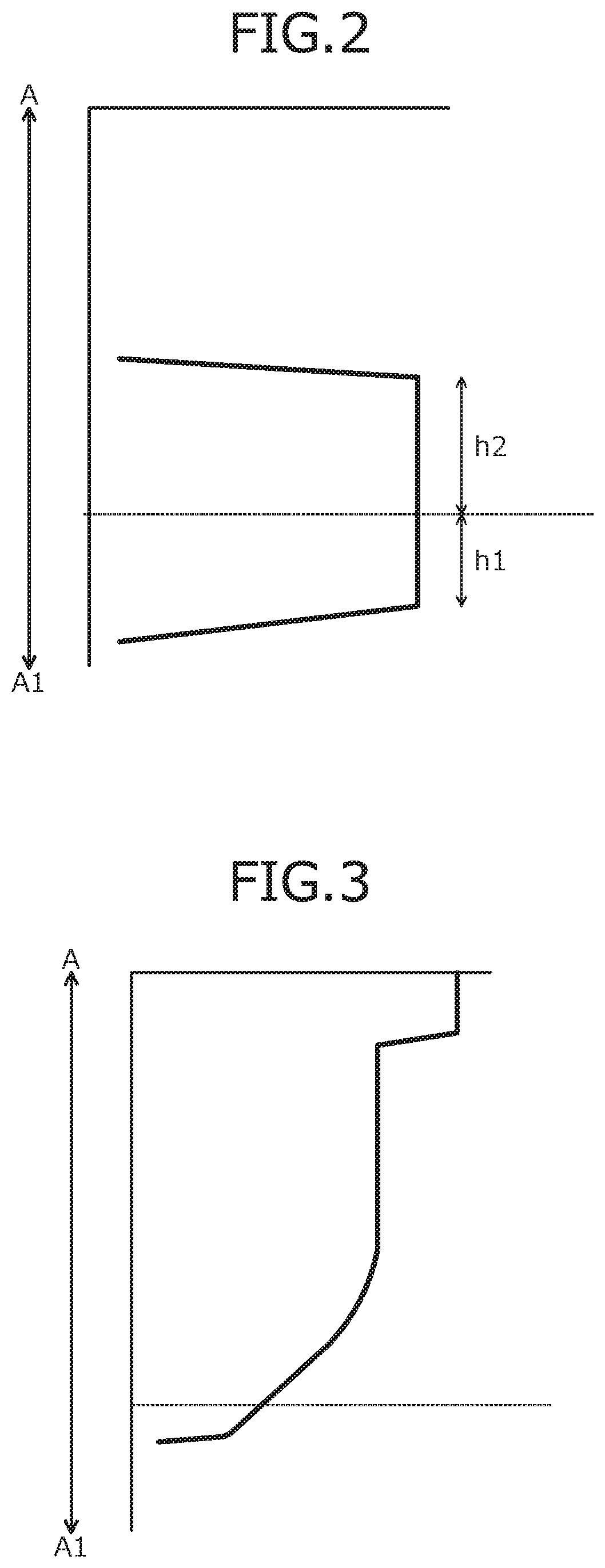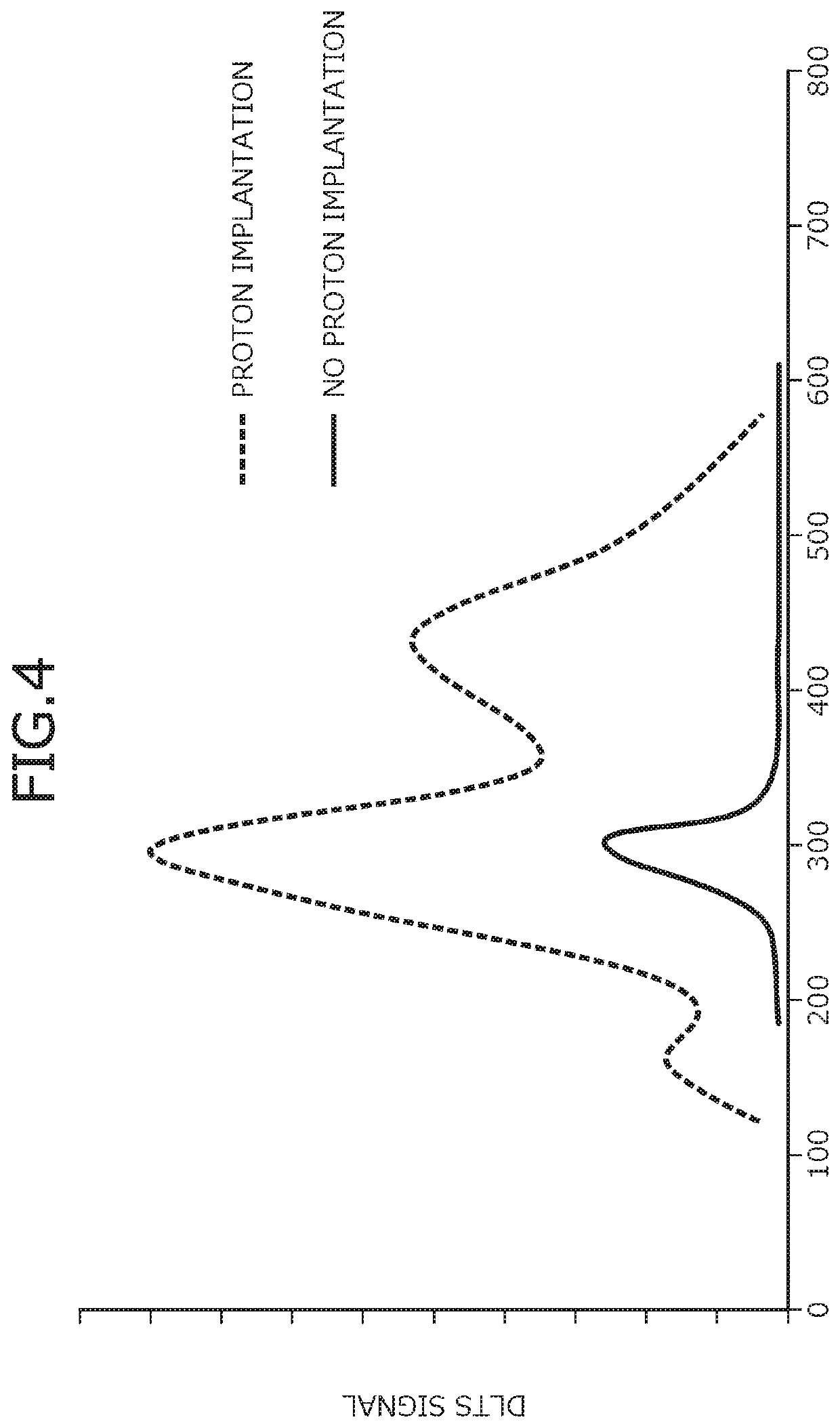Silicon carbide semiconductor device and method of manufacturing a silicon carbide semiconductor device
a semiconductor device and silicon carbide technology, applied in semiconductor devices, diodes, electrical devices, etc., can solve the problems of low current density of power mosfets, high possibility of exceeding the material limit of silicon, and difficult to adapt for larg
- Summary
- Abstract
- Description
- Claims
- Application Information
AI Technical Summary
Benefits of technology
Problems solved by technology
Method used
Image
Examples
first embodiment
[0070]In the silicon carbide semiconductor device of the first embodiment, protons are implanted as a lifetime killer near an interface of the n+-type silicon carbide semiconductor substrate 1 and the n-type boundary layer 2. The protons are lifetime killers and may reduce the hole density at the interface of the n+-type silicon carbide semiconductor substrate 1 and the n-type boundary layer 2 by 100 times or more. As a result, hole and electron recombination may be reduced and the growth of crystal defects may be suppressed.
[0071]FIG. 2 is a graph of proton concentration of the silicon carbide semiconductor device according to the first embodiment. FIG. 2 depicts proton concentration of a part along line A-A′ in FIG. 1. In FIG. 2, a vertical axis indicates depth from the surface of the p+-type contact region 7 and a horizontal axis indicates proton concentration. Further, a dotted line parallel to the horizontal axis indicates the interface of the n+-type silicon carbide semiconduc...
second embodiment
[0093]As depicted in FIG. 9, protons are implanted in a region of the n−-type drift layer 3, the region spanning a distance h3 from a surface of the n−-type drift layer 3 facing toward the n-type boundary layer 2. The distance h3 is, for example, the film thickness of the n−-type drift layer 3. FIG. 10 is a graph of proton concentration of the silicon carbide semiconductor device according to the FIG. 10 depicts the proton concentration of a part along line A-A′ in FIG. 9. In FIG. 10, a vertical axis indicates depth from a surface of the p+-type contact region 7 and a horizontal axis indicates proton concentration. Further, a dotted line parallel to the horizontal axis indicates the interface of the n+-type silicon carbide semiconductor substrate 1 and the n-type boundary layer 2.
[0094]As depicted in FIG. 10, a concentration of the protons of the n−-type drift layer 3 is lower than a concentration of the protons implanted in the n+-type silicon carbide semiconductor substrate 1 and...
fifth embodiment
[0112]In the silicon carbide semiconductor device of the fifth embodiment, protons are implanted as a lifetime killer near an interface of the p-type silicon carbide semiconductor substrate 16 and the n-type boundary layer 2, and near an interface of the n−-type drift layer 3 and the p+-type base region 4. The IGBT performs bipolar operation and therefore, crystal defects also grow from the interface of the n−-type drift layer 3 and the p+-type base region 4, and thus, protons are also implanted near the interface of the n−-type drift layer 3 and the p+-type base region 4.
[0113]The protons become a lifetime killer, enabling the hole density of the interface of the p-type silicon carbide semiconductor substrate 16 and the n-type boundary layer 2 and the hole density of the interface of the n−-type drift layer 3 and the p+-type base region 4 to be reduced. As a result, hole and electron recombination is reduced, enabling the growth of crystal defects to be suppressed.
[0114]FIG. 21 is ...
PUM
| Property | Measurement | Unit |
|---|---|---|
| thickness | aaaaa | aaaaa |
| thickness | aaaaa | aaaaa |
| thickness | aaaaa | aaaaa |
Abstract
Description
Claims
Application Information
 Login to View More
Login to View More - R&D
- Intellectual Property
- Life Sciences
- Materials
- Tech Scout
- Unparalleled Data Quality
- Higher Quality Content
- 60% Fewer Hallucinations
Browse by: Latest US Patents, China's latest patents, Technical Efficacy Thesaurus, Application Domain, Technology Topic, Popular Technical Reports.
© 2025 PatSnap. All rights reserved.Legal|Privacy policy|Modern Slavery Act Transparency Statement|Sitemap|About US| Contact US: help@patsnap.com



